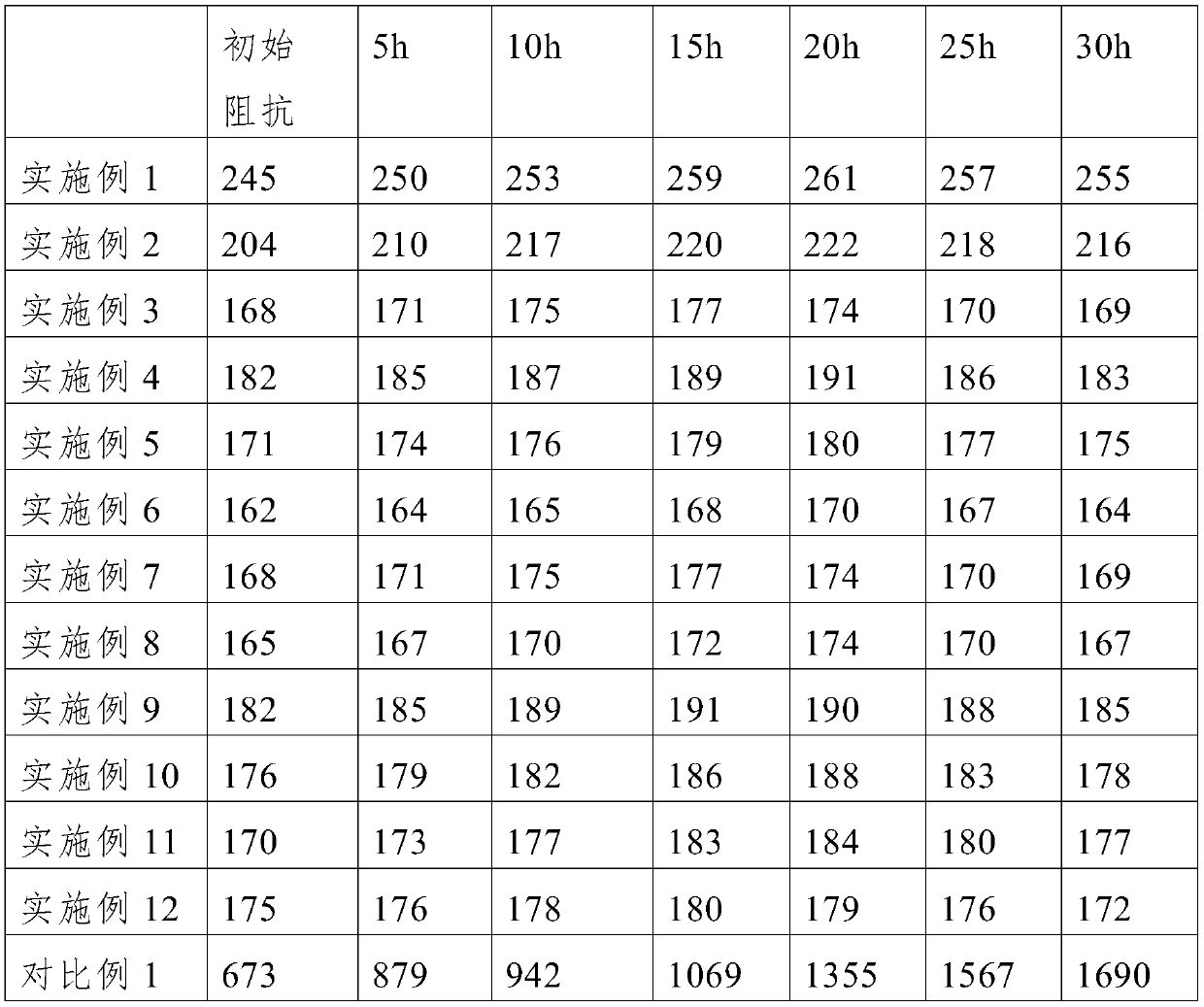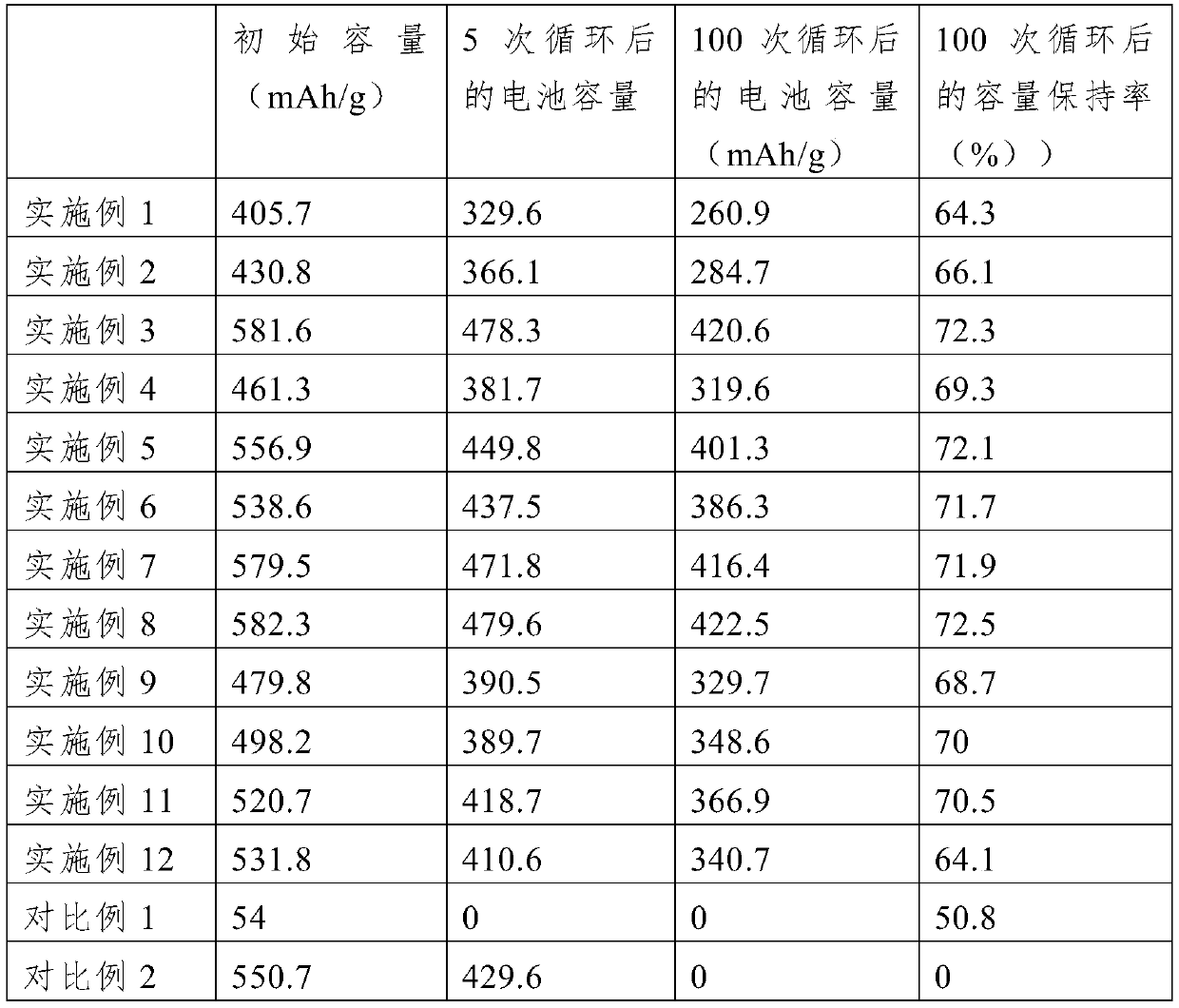All-solid-state battery and preparation method thereof
An all-solid-state battery and solid-state electrolyte technology, applied in secondary batteries, battery electrodes, lithium batteries, etc., can solve the problems of low battery cycle performance and rate performance, battery capacity attenuation, low energy density, etc., to improve cycle performance and Rate performance, reduced interface resistance, and improved energy density
- Summary
- Abstract
- Description
- Claims
- Application Information
AI Technical Summary
Problems solved by technology
Method used
Image
Examples
preparation example Construction
[0077] According to another aspect of the present invention, a method for preparing an all-solid-state battery is provided, including:
[0078] Step S1: Under vacuum or an inert atmosphere, disperse FeS and an ion-conducting agent in a solvent in which a binder is dissolved, prepare a positive electrode slurry, apply the positive electrode slurry to a current collector, and dry to obtain a positive electrode sheet, wherein, The ion conductive agent is sulfide;
[0079] Step S2: Disperse the solid electrolyte into a solvent in which the binder is dissolved in a vacuum or an inert atmosphere, prepare a solid electrolyte slurry, apply the solid electrolyte slurry to the positive electrode sheet, and dry to obtain a solid electrolyte layer;
[0080] Step S3: Under vacuum conditions, superimpose the negative electrode sheet on the solid electrolyte layer, pressurize and heat the superimposed positive electrode sheet, solid electrolyte layer and negative electrode sheet to obtain an...
Embodiment 1
[0135] In the preparation method of the all-solid-state battery in this embodiment, step S1 is first performed: under vacuum, disperse FeS and the ion-conducting agent in a solvent in which the binder is dissolved, prepare the positive electrode slurry, and coat the positive electrode slurry The current collector is dried to obtain a positive electrode sheet, wherein the ion-conducting agent is sulfide.
[0136] Wherein, the binder is polypropylene carbonate, the solvent is tetrahydrofuran, and the concentration of the binder in the solvent is 5wt%; the sulfide is 75Li 2 S~25P 2 S 5 Glass phase, FeS and 75Li 2 S~25P 2 S 5 The mass ratio of the glass phase is 1:1.5; FeS and 75Li 2 S~25P 2 S 5 The mass ratio of the total mass of the glass phase to polypropylene carbonate is 100:6; the current collector is aluminum foil, and the coating thickness of the positive electrode slurry is 100-400 μm; the drying conditions are first dried at 60°C for 100 minutes, and then heated u...
Embodiment 2
[0142] Other parameters of this embodiment and embodiment 1 are all the same, except that the sulfide in step S1 and step S2 is 75Li modified by LiCl doping 2 S~25P 2 S 5 Glassy phase, of which, 75Li 2 S~25P 2 S 5 The molar ratio of glass phase to LiCl is 97:3 (i.e. 100:3.09)
PUM
 Login to View More
Login to View More Abstract
Description
Claims
Application Information
 Login to View More
Login to View More - R&D
- Intellectual Property
- Life Sciences
- Materials
- Tech Scout
- Unparalleled Data Quality
- Higher Quality Content
- 60% Fewer Hallucinations
Browse by: Latest US Patents, China's latest patents, Technical Efficacy Thesaurus, Application Domain, Technology Topic, Popular Technical Reports.
© 2025 PatSnap. All rights reserved.Legal|Privacy policy|Modern Slavery Act Transparency Statement|Sitemap|About US| Contact US: help@patsnap.com


